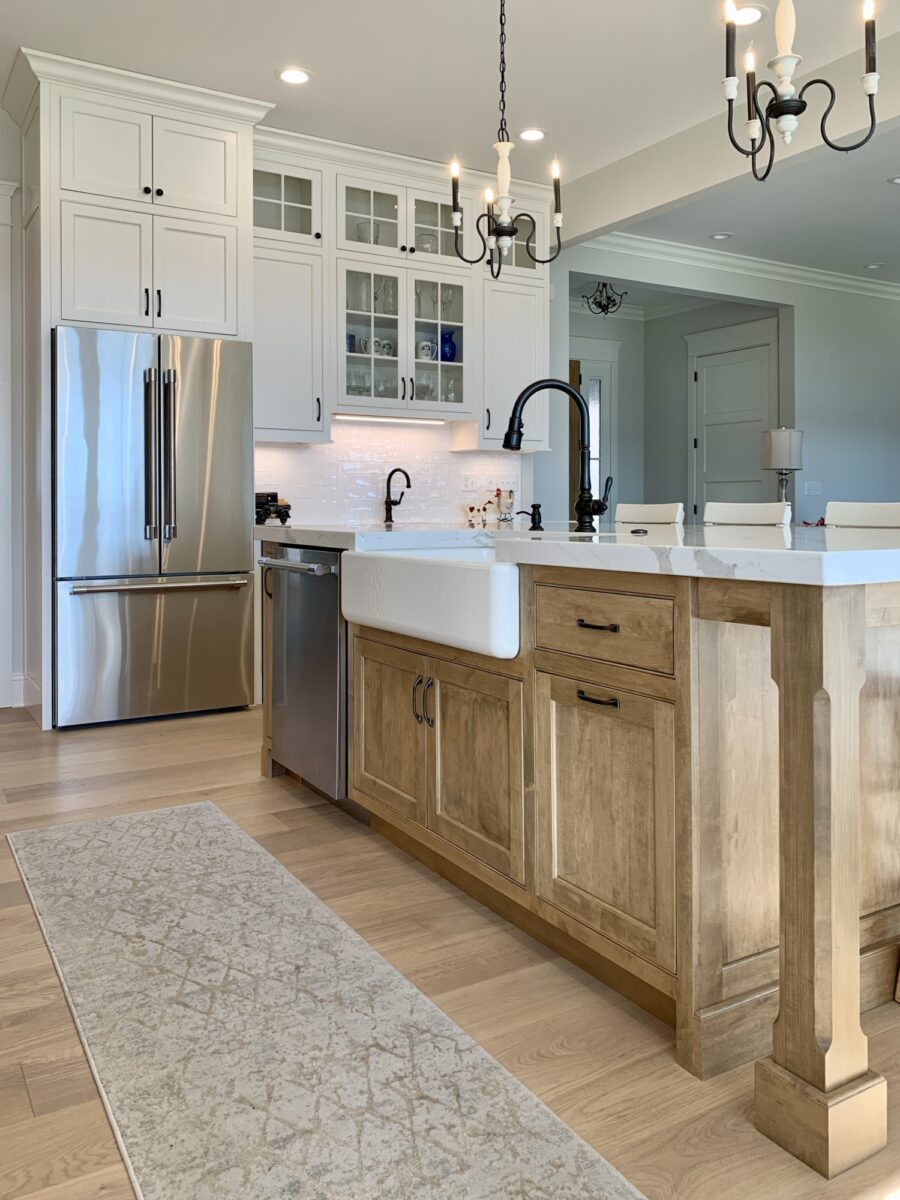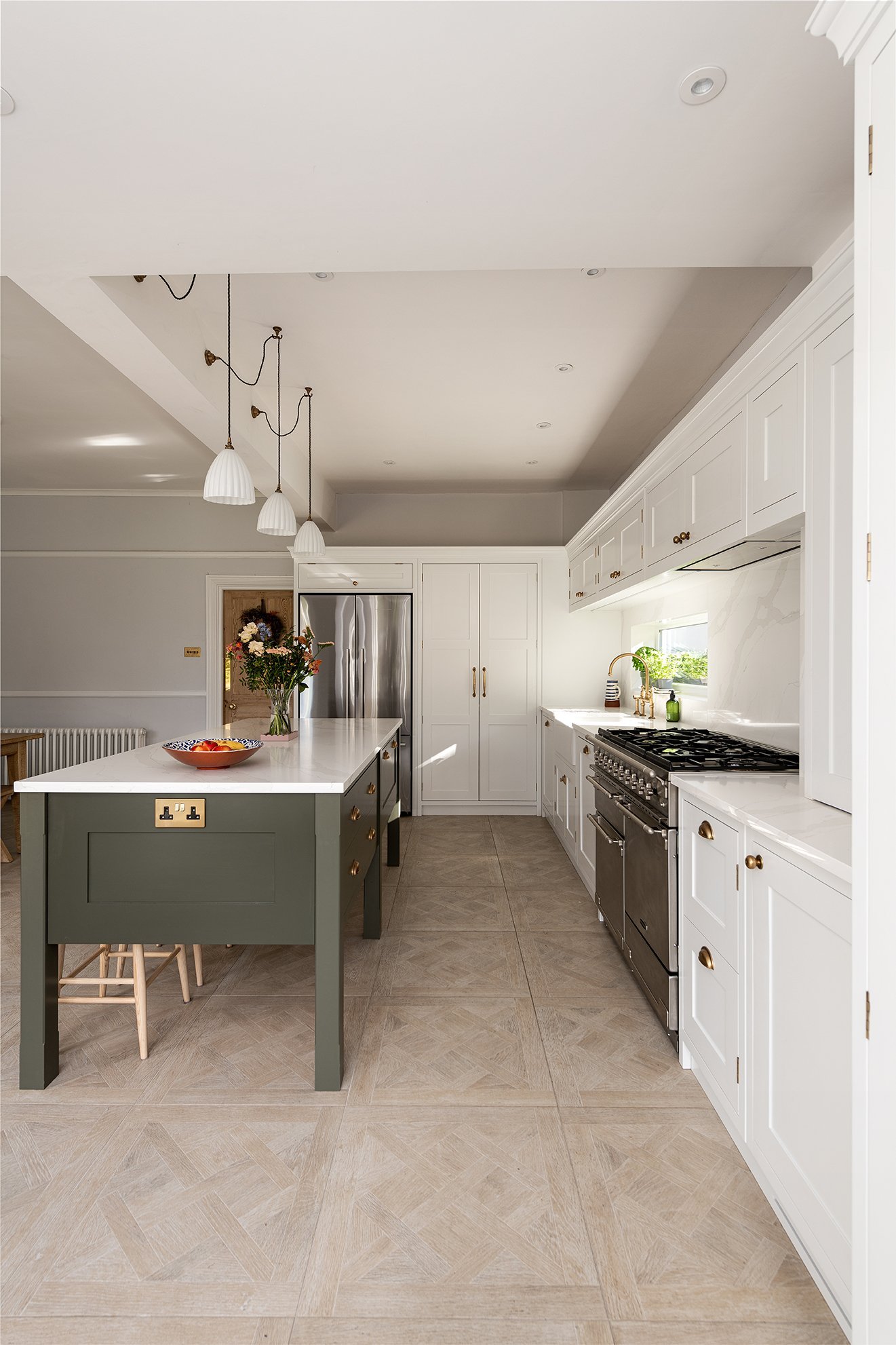Key Considerations for Locating the Best Legs For Kitchen Island for Your Design
When picking the perfect legs for your kitchen island, numerous essential factors to consider come right into play that can substantially affect both capability and aesthetic appeals. The selection of material, elevation, and style must line up with your general kitchen area design to make sure an unified appearance. In addition, security and maintenance demands are critical for long-term usage and convenience of treatment. Comprehending these variables can improve your cooking area's functionality and aesthetic appeal, yet the subtleties of each consideration can usually be ignored. What implications might these choices have on your kitchen's total environment?
Determine Your Design Preference
Establishing your design preference is essential when picking the excellent legs for your kitchen island. The legs of your kitchen island not just offer a useful objective however also add substantially to the general visual of the room. Determining your layout style-- be it modern-day, rustic, traditional, or commercial-- is essential.
For a modern-day kitchen area, think about smooth, minimalistic legs that match open rooms and tidy lines. In contrast, a rustic setting might gain from even more robust, farmhouse-style legs made of recovered materials. Conventional kitchens usually prefer turned or elaborate legs, which can add a touch of beauty and elegance. An industrial visual may call for steel legs that stress a raw, unfinished appearance.
Additionally, consider the height and percentage of the legs in relationship to the island's surface. Ultimately, your design preference will affect not only the option of legs but also the total consistency of your kitchen's design.
Select the Right Product
Selecting the ideal material for your kitchen island legs is crucial in ensuring both sturdiness and aesthetic appeal. Different materials offer distinctive benefits, and the option frequently reflects your layout preferences and practical requirements.
Timber is a popular option, providing warmth and adaptability. It can be tarnished or painted to match your cooking area style, making it adaptable to different designs, from rustic to modern. Timber might call for normal upkeep to maintain its look and integrity.

If you seek a special touch, think about acrylic or glass materials. They can create an impression of room and agility in your cooking area, making them an exceptional option for smaller areas - Legs For Kitchen Island. Nonetheless, these alternatives may need cautious handling and upkeep to prevent scrapes.
Inevitably, the material you pick must straighten with your cooking area's general design, ensuring that the legs serve both useful and decorative purposes.
Think About Height and Percentages
When making a kitchen area island, elevation and proportions play a critical role in ensuring performance and comfort. The conventional elevation for a cooking area island typically ranges from 36 to 42 inches, aligning with traditional counter elevations or bar elevations, specifically. This measurement is important for harmonizing with bordering counter tops and feceses, enabling ease of usage during dish preparation and social interactions.
Furthermore, the island's moved here percentages have to match the total cooking area layout. Think about the ratio between the island's width and length, guaranteeing it gives ample surface area without crowding the kitchen.
In addition, the height of the legs or base can affect the aesthetic allure and functionality. Taller legs may lend a more modern, ventilated feel, while shorter ones can evoke a typical, based look. Inevitably, thoroughly taking into consideration elevation and percentages will result in a cooking area island that is both functionally effective and visually appealing, improving the general style of the room.
Assess Security and Longevity
A cooking area island's legs should not only complement its elevation and percentages however likewise give adequate security and longevity to sustain everyday tasks. The legs are necessary to the overall functionality of the island, as they bear Our site the weight of the counter top and any type of extra loads, such as appliances or cooking tasks.
When analyzing stability, it is critical to take into consideration the leg layout and material. Tough steel or solid wood legs frequently provide superior stamina compared to lighter products like engineered wood or plastic. In addition, a broader base can enhance security, reducing the danger of tipping or tottering during usage.
Longevity is similarly vital; the legs must stand up to deterioration from daily use. Think about surfaces that protect versus scrapes, damages, and wetness, specifically in a kitchen environment. Assess the high quality of building, such as joints and attachments, which can significantly influence the legs' long-term performance.
Eventually, buying well-crafted legs that prioritize security and toughness will certainly guarantee your kitchen area island remains a reputable work area visit for several years to find, improving your cooking experiences while keeping aesthetic appeal.
Consider Upkeep and Treatment
Upkeep and treatment are critical considerations for ensuring the durability and performance of kitchen area island legs. When choosing legs, it is important to evaluate the products made use of, as different choices require differing degrees of maintenance. For circumstances, wooden legs may need routine refinishing or sealing to avoid moisture damage and scratches, while metal legs may require normal brightening to preserve their sparkle and stop rust.
Moreover, the coating put on the legs can affect maintenance requirements. A high-gloss layer might be much easier to clean yet might show scratches and fingerprints quicker than a matte surface. It is suggested to select materials and finishes that enhance your way of living; for instance, if you frequently organize events, select durable materials that can hold up against deterioration.
In addition, take into consideration the cleaning process entailed in keeping these legs. Smooth surfaces often need very little effort, while detailed layouts might gather dust and grime, demanding even more labor-intensive cleansing techniques. Legs For Kitchen Island. Inevitably, considering the upkeep and treatment needed for your chosen kitchen area island legs will certainly not just enhance their aesthetic charm but likewise guarantee their functional integrity gradually
Verdict
In verdict, choosing the optimum legs for a cooking area island demands mindful consideration of various variables, including layout style, material selection, upkeep, security, and height. Each component plays an essential role in ensuring that the legs not only enhance the visual allure of the kitchen however also offer the necessary support and toughness for day-to-day use. A well-informed choice will ultimately add to a functional and visually pleasing kitchen area environment.
The legs of your kitchen island not just offer a useful purpose however also contribute dramatically to the general visual of the room.Maintenance and treatment are vital considerations for making sure the longevity and efficiency of kitchen island legs. Wood legs may require regular refinishing or securing to protect against dampness damages and scrapes, while steel legs may require normal polishing to preserve their sparkle and stop rust.
Ultimately, factoring in the maintenance and treatment required for your picked kitchen island legs will certainly not just enhance their visual charm however also guarantee their practical integrity over time.
